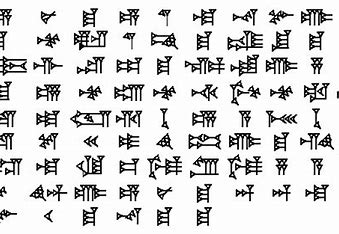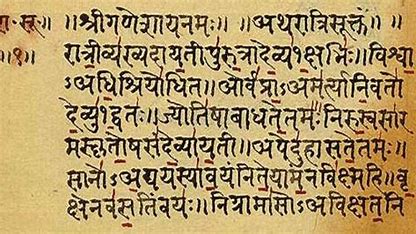“Tracing the Ancient Roots: Exploring the Oldest Spoken Languages with Historical Facts and Regional Origins”
1. Egyptian (Coptic): The Ancient Tongue of the Nile

- Date of Oldest Known Example: circa 2690 BCE
- Region of Origin: Egypt
- Current Status: Liturgical language in Coptic Orthodox Church
- Historical Significance: Preserved in hieroglyphs and inscriptions, Coptic represents the linguistic legacy of ancient Egypt, with its roots dating back to the dawn of recorded history. The earliest complete sentence in Egyptian dates to around 2690 BCE, making it the oldest spoken language with verifiable evidence.
2. Sumerian: Cradle of Civilization in Mesopotamia

- Date of Oldest Known Example: circa 3100 BCE
- Region of Origin: Mesopotamia (modern-day Iraq)
- Current Status: Extinct
- Historical Significance: Sumerian, the language of ancient Sumer, is credited as one of the earliest written languages, with clay tablets dating back to circa 3100 BCE. It served as the foundation for cuneiform writing and played a vital role in the development of civilization in Mesopotamia.
3. Akkadian: Lingua Franca of the Ancient Near East

- Date of Oldest Known Example: circa 2500 BCE
- Region of Origin: Mesopotamia (modern-day Iraq)
- Current Status: Extinct
- Historical Significance: Akkadian emerged as the lingua franca of the ancient Near East, spoken in the Akkadian Empire and later adopted by the Babylonians and Assyrians. The oldest known Akkadian texts date back to circa 2500 BCE, making it one of the earliest attested Semitic languages.
4. Tamil: Ancient Dravidian Heritage in South India

- Date of Oldest Known Example: circa 300 BCE
- Region of Origin: South India
- Current Number of Native Speakers: Approximately 75 million
- Historical Significance: Tamil, one of the oldest non-Sanskrit languages native to India, boasts a rich literary tradition dating back to circa 300 BCE. Inscriptions and literature in Old Tamil provide insights into the cultural and linguistic heritage of the Dravidian civilization.
5. Chinese: Millennia of Civilization in East Asia

- Date of Oldest Known Example: circa 1250 BCE
- Region of Origin: China
- Current Number of Native Speakers: Approximately 1.3 billion
- Historical Significance: Chinese, with its roots in Archaic Chinese dating back over 3,000 years, stands as one of the oldest attested living languages. Oracle Bone Script, dating to circa 1250 BCE, represents the earliest written records of the Chinese language, reflecting millennia of cultural and linguistic evolution.
6. Hebrew: Revival of an Ancient Language in Israel

- Date of Oldest Known Example: circa 10th century BCE
- Region of Origin: Israel
- Current Number of Native Speakers: Approximately 5 million
- Historical Significance: Hebrew, with roots tracing back to the 10th century BCE, holds a central place in Jewish history and religious texts. After centuries of dormancy, Hebrew experienced a revival in the 19th century, leading to its status as the official language of the State of Israel.
7. Greek: Pillars of Knowledge and Philosophy in Ancient Greece

- Date of Oldest Known Example: circa 16th century BCE
- Region of Origin: Greece
- Current Number of Native Speakers: Approximately 13.5 million
- Historical Significance: Greek, dating back to the 16th century BCE, played a pivotal role in the development of Western civilization. The earliest known records in Linear B script provide glimpses into the linguistic heritage of ancient Greece, known for its contributions to literature, philosophy, and science.
8. Sanskrit: Sacred Language of Ancient India

- Date of Oldest Known Example: circa 1500 BCE
- Region of Origin: Ancient India
- Current Number of Native Speakers: Approximately 24,821
- Historical Significance: Sanskrit, rooted in Vedic Sanskrit from circa 1500 BCE, served as the language of ancient Indian religious texts and philosophical treatises. Rigveda, with hymns dating back to the early Vedic period, represents the oldest known literary work in Sanskrit, shaping the cultural and spiritual traditions of India.
9. Aramaic: Crossroads of Ancient Empires in the Near East

- Date of Oldest Known Example: circa 1100 BCE
- Region of Origin: Ancient Aram (modern-day Syria)
- Current Number of Native Speakers: Approximately 1 million to 2 million
- Historical Significance: Aramaic, emerging in ancient Aram around 1100 BCE, served as the administrative and diplomatic language of the Neo-Assyrian and Neo-Babylonian Empires. The Aramaic language, with its various dialects, facilitated communication and cultural exchange across the Near East, leaving a lasting impact on the region’s linguistic landscape.
10. Latin: Language of Empire and Intellectual Inquiry in Ancient Rome

- Date of Oldest Known Example: circa 7th century BCE
- Region of Origin: Latium (modern-day Rome)
- Current Status: Extinct (but used in various institutions and disciplines)
- Historical Significance: Latin, dating back to the 7th century BCE, emerged as the language of the Roman Republic and later the Roman Empire. It served as the medium for literature, law, philosophy, and governance, exerting a profound influence on European languages and cultures.
Traversing the annals of history and geography, we have unraveled the origins of the oldest spoken languages, each bearing witness to the rich tapestry of human civilization. From the hieroglyphs of ancient Egypt to the philosophical treatises of ancient Greece, these languages serve as portals to our collective past, preserving the voices of antiquity for generations to come. As we celebrate the diversity and resilience of linguistic heritage, let us cherish these ancient tongues as invaluable treasures of human history and culture. Oldest Spoken Languages.